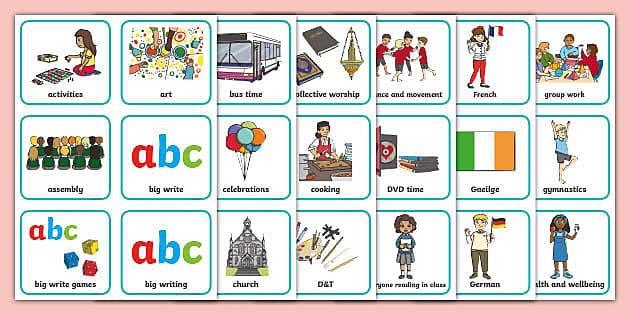


Visual Timetables are a fantastic way of helping to reduce children's anxiety. Some children can become distressed when they are unsure of what will be happening during their day, particularly when the structure of their day differs from their normal routine. By having a visual timetable children can see for themselves what will be happening throughout each stage of the day, this can act as a comfort and help children to manage their emotions.
Using a visual timetable within the classroom is beneficial to all students, particularly those with SEN or EAL. Children with SEN may find it challenging to recall upcoming events during the day, which can cause them to become uncomfortable or frustrated. Some pupils, particularly those who are Autistic, may rely on having a predictable routine to help them in regulating their emotions and avoiding becoming distressed or overwhelmed. Pupils with ADHD, dyslexia or other neurodivergences can also benefit from the structure that a visual timetable provides. By having a visual timetable to hand, this can act as an incredible calming tool. The use of images and objects is helpful to students who need support in regard to speech and language or children who have EAL. Often children may not be able to follow a verbal routine and seem like they are being uncooperative, but this can be due to a lack of understanding. This Editable Visual Timetable is particularly helpful if you are meeting a specific set of needs or need to cover an uncommon event such as a fire drill.
Visual timetables can be used at any point during the day or throughout the entire day. They are ideal for use at home, in an educational setting, or on the go. Visual timetables can be used to support a sequence of actions children may be finding particularly tricky, they are also great in supporting children to gain more independence such as during teeth brushing or handwashing.
Visual timetables not only aid children in becoming more confident within daily routines, they are also a great tool when supporting behaviour. Children need structure and guidance, with clear instructions that highlight what is expected of them and when. The use of the visual timetable supports children to gain an understanding that to reach the events and activities they most enjoy, they must fulfill the prior tasks first. The ability to see the point within the day they enjoy most in the form of a picture, image, or object helps children to remain positive and optimistic. The use of ;'when' and 'then' alongside Visual Timetable cards will further support children's engagement.
'When you pick up the crayons, then we can go outside'
Watch our short video to learn more tips on how to usevisual timetable-






















